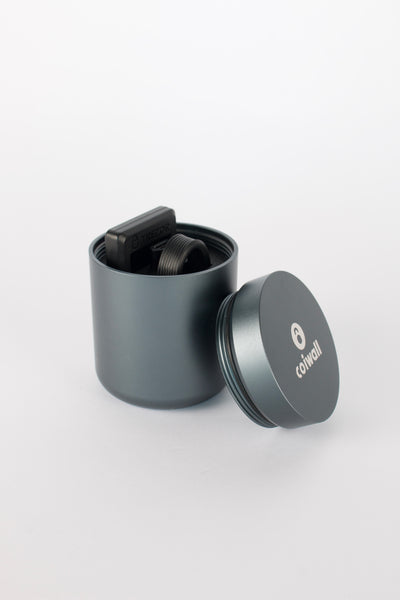Sometimes, crypto feels like a Wild West film—a hustle of optimistic pioneers, complex maps, and, every now and then, a high-noon standoff no one saw coming. If you’ve spent any time studying blockchains beyond “HODL, moon?” you’ve likely stumbled across the phrase “51% attack”. But what does it really mean when someone gets ahold of more than half the network? And is it as catastrophic for “decentralized” as it sounds?
When Control Shifts: How a 51% Attack Starts
Imagine a room full of folks voting on who should control the snack selection at your office. As long as everyone’s got a voice, you end up with a fair, maybe even quirky, bunch of snacks. But let’s say one rogue group takes over more than half the votes—suddenly it’s sardines and licorice all week.
That’s a bit like what happens in a 51% attack. On a blockchain, miners (or validators depending on protocol) confirm new blocks of transactions. If one individual or group manages to snag over half that power, they can, well, rewrite the snack rules. Or in the crypto world, rewrite recent blockchain history.
Isn’t Crypto Supposed to Be Unbreakable?
Quite often, you’ll hear blockchains hyped as 'immutable' or 'unhackable'. That’s mostly true—unless someone actually seizes majority control, which is precisely the 51% attack scenario. These folks can then validate fake transactions, prevent other users from confirming blocks, and even try to double-spend coins. Think of it as forging a check that never bounces… until someone notices.
Making a Profit Out of Thin Air: The Double-Spend Trick
Let me explain. The main reason anyone would go to the trouble of a 51% attack is pretty straightforward: money. The double-spend is their favorite move.
Here's how it works (in a nutshell):
- A miner sends coins to a merchant—for, say, a shiny new Ledger or Trezor hardware wallet—while also secretly creating an alternate blockchain fork where the transaction never happened.
- If they control enough network power, they push this secret fork ahead, essentially overwriting the history so the merchant no longer has their coins, but the attacker keeps the wallet. Voilà—two cakes, both eaten.
Wild, right? And honestly, pretty hard to pull off on larger, well-secured networks (think: Bitcoin). But it’s less science fiction and more cautionary tale for smaller projects.
Who’s Really at Risk?
Here’s the rub: it’s all about scale. The security of a blockchain often mirrors the size and distribution of its network. If you’re a miner dreaming of a 51% attack on Bitcoin or Ethereum’s earlier proof-of-work chain, good luck—you’d need to commandeer more hardware than most data centers collect in a decade, plus foot a power bill big enough to bankrupt a small nation.
However, smaller blockchains, sidechains, or niche coins don’t have the same defense. Their hash rates or validator pools run much leaner. A well-funded team or an organized group could theoretically accumulate >50% control. And suddenly, that double-spending afternoon isn’t so far-fetched.
Can Regular Users Protect Themselves?
You know what? There’s good news. Even if the specter of a 51% attack sounds scary, most folks don’t have to lose sleep every night. Here’s why:
- Major networks like Bitcoin or Ethereum (before “The Merge”) have massive, distributed mining operations. A 51% attack isn’t impossible but is wildly impractical.
- Reputable exchanges and merchants often wait for multiple confirmations—sometimes six or more—before considering transactions settled. This gives the network time to stabilize and, importantly, makes double-spending far less likely.
But let’s say you’re dabbling with lesser-known altcoins or supporting that up-and-coming NFT experiment. Taking basic precautions goes a long way. Use secure wallets (hello again, Ledger and Trezor), double-check transaction progress, and never put in more than you’re prepared to lose, especially with new projects.
The Strange Case of the Dogecoin Attack That Never Quite Happened
Dogecoin, our favorite meme-coin, once lived dangerously close to a hash rate that would allow a mid-sized mining farm to gain majority control. What happened? The community banded together; mining pools merged (not literally but through merged mining), making the networks stronger together. Sometimes, the best defense really is camaraderie.
Why 51% Attacks Haven’t Killed Crypto—Yet
Odd as it may sound, the threat of a 51% attack keeps crypto honest. Knowing someone could swoop in and change history if you slack off? That’s motivating. Network participants have to keep each other in check—miners looking over their digital shoulders; validator pools growing more distributed; users scrutinizing the chain for oddities. The balance of power is part of what lends crypto its unique charm. Risk and reward, tightly tangled.
Moreover, many blockchains now use alternative security models. Ethereum famously moved to proof-of-stake, where validators stake tokens rather than relying on raw computational firepower. That makes the 51% attack not just expensive but punitive—an attacker stands to lose everything staked if they try foul play.
Defending the Fort: Upgrades and Community Watchdogs
Vulnerability isn’t a sentence, especially not with open-source communities backing the tech. Software upgrades, changes to consensus mechanisms, and transparent bug-bounty programs build a sort of digital immune system. Plus, the folks behind major wallet platforms like Trezor and Ledger are almost always quick to flag network weirdness. If you’re curious, checking their security updates or keeping tabs on crypto Twitter is like having a weather app for blockchain storms.
And if you really want to feel safe? Cold storage (that’s just stowing your coins offline—in a hardware wallet) means even if the worst comes to pass, your funds are out of reach from any blockchain drama.
The Big Picture—And a Small Reminder
So, is a 51% attack the end of the crypto dream? Not even close. But it’s a sobering reminder: even the smartest, toughest blockchains need broad, lively participation. It’s not about perfect defense, but strong, resilient communities and savvy users watching out for each other.
When you're picking your next coin or project, ask yourself: how many people are holding it up? Does the network span the globe, or could a single warehouse of machines tip the balance? Sometimes, just digging a little deeper turns out to be your best defense.
Honestly, that’s what makes crypto so fascinating—it’s a story that never sits still, shifting with every new miner, developer, or hardware wallet plugged in on someone’s kitchen table. Predators will always circle, but as long as there are enough hands on deck, those high-noon showdowns? They rarely go to the bad guys.











